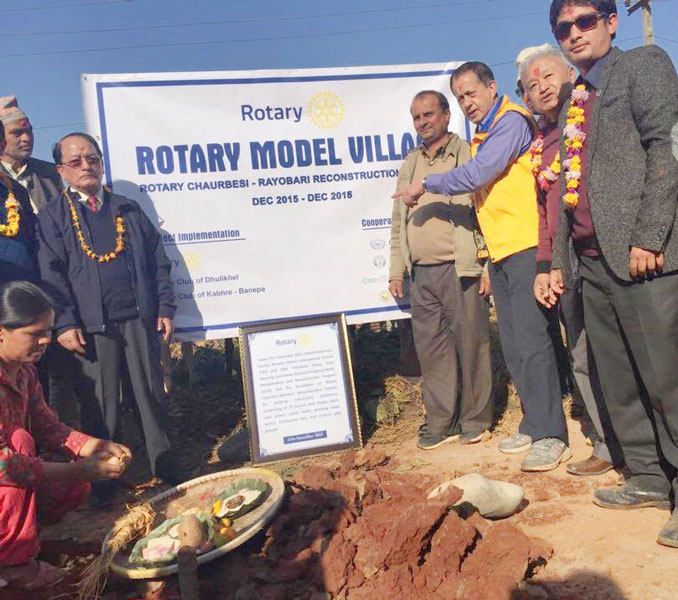Ever since the catastrophic 2015 earthquake shook Nepal, the Rotarians of District 3292 were involved in rebuilding and rehabilitating the worst affected people of this Himalayan country. One such Rotary initiative was the reconstruction of two villages — Chaurbesi and Rayobari in Kavrepalanchok district — as integrated model villages, which were then handed over to the villagers on April 11.

Chaurbesi and Rayobari villages, located about 54 km northeast of Kathmandu, were among the worst affected villages of Nepal. According to the Ministry of Home Affairs, 318 people died and 1,179 were injured in the earthquake in Kavrepalanchok district. Besides, 49,933 houses were completely destroyed and 23,714 houses were damaged.
“The rehabilitation process was done in three phases,” said IPDG Keshav Kunwar. “In the first phase, through our Rotary clubs Dhulikhel and Kavre-Banepa, we provided immediate relief like food buckets, water filters, warm clothes and medicines. In the second phase 51 temporary shelters were built; long-term rehabilitation was the final phase where 69 low-cost permanent earthquake-resistant houses were constructed in the villages.” On December 11, 2015, the foundation stones for the houses were laid. All the houses complied to the National Reconstruction Authority of Nepal’s standards. Each house had four rooms, a separate toilet and a bathroom.

Water tanks, a pumping machine, public water taps, a multi-purpose community hall, crematorium and an electric generator were provided in these model villages. Fifty houses were given bio-gas facility and a three-km road was laid to the village. “Sixty villagers were trained in masonry and carpentry, at a cost of $6,200, to build these earthquake-resistant houses,” said Kunwar. In total, the project cost $478,953, of which about $197,400 was funded by the District. The rest of the money came from RC Petroskey, D 6290, US, RC Edwardstown, D 9520, Australia and various other NGOs. Rotarians also gave seven fruit-bearing saplings to each family to help them in income generation.





